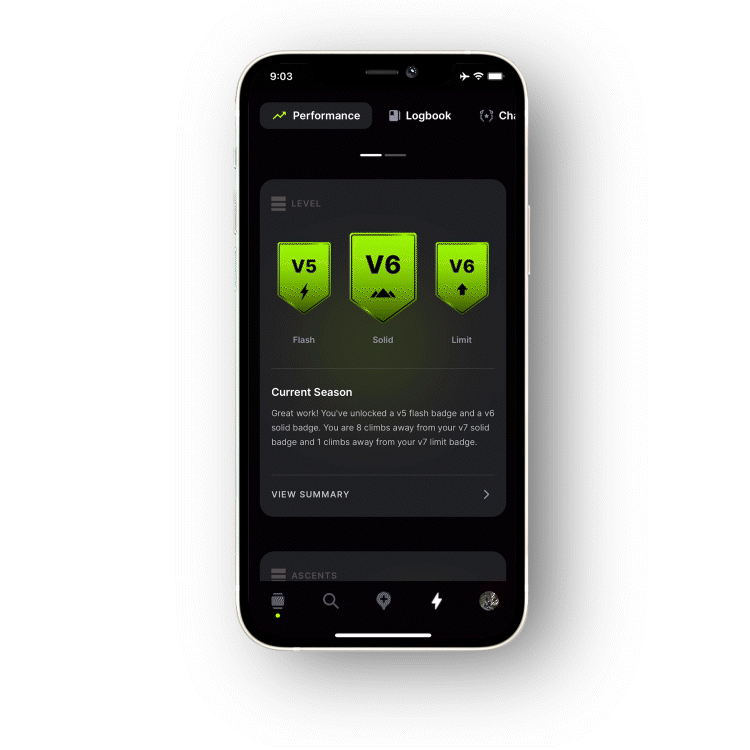THE PROCESS: PART II
“CONTEXT”
Last month, I talked about how sending is the candy of climbing nutrition, sitting at the tip of our food pyramid (in more ways than one, I suppose). A lot of us climbers want to ascend that pyramid, myself included...but let’s add yet another layer of challenge to that analogy. What if I told you that you could theoretically climb that pyramid and get your hands on that sweet send, only to find that it tastes like nothing at all—or heaven forbid, what if it actually tastes awful? That sounds scary, but it’s entirely possible...and this is because what gives your send its flavor is the often-overlooked key ingredient of context.
A ‘send’ means next to nothing without context.
Here’s an example. If I tell you my friend just climbed a V7, but then I tell you my friend is Ashima Shiraishi (not to brag, of course), the meaning of that send likely changes in your mind. Or perhaps if I tell you I did my first V7, but that V7 also targeted a past injury of mine & took me hundreds of attempts, the meaning changes again. Or maybe your friend tells you he sent his first gym V7, but then you find out later that he set & graded the route himself, and it’s a ladder of downpulling jugs on a vertical wall. Those are all V7 sends, each with a totally different meaning...but I wonder if the nuanced flavor of that meaning gets lost amidst our rabid consumption. I believe climbing culture is far too fixated on that external result—one which has no true causality to our efforts, progress, or stories as athletes...and I wonder if we are so fixated on it that there are probably climbers who oftentimes feel miserable and inadequate if they are not sending, or at least performing in the way they believe they should, could, or would like to.
Actually, I don’t wonder about that last part. I know it’s true. I know it’s true because a lot of days, I’m one of those miserable climbers. Indeed, I’m not speaking from any high horse; I’m acting this very scenario out right now, as I return from an 18-month hiatus due to COVID. I’ve lost 5ish V-grades of strength, I’m plagued by overuse injuries, and I oftentimes get on a climb expecting to give a 6/10 in effort and pop off after giving an 11/10. It fucking sucks, and after an annoying wrist sprain that’s guaranteed to keep me off the wall for at least six weeks, I was really close to saying ‘screw this’ and continuing my online onslaughts in Smash Ultimate.
To be clear, I don’t think it’d be wrong for me to quit climbing if it didn’t serve me anymore; I think the choice to walk away is often undervalued, especially in American culture. (Not to mention, my Zero Suit Samus is pretty crisp.) However, I do feel it would be wrong to give up on climbing without remembering a few things:
sending does not correlate with success
progression is not linear but a trend
climbing is a process.
There is one more thing: context isn’t given to us. It’s something we have to actively seek (and even create) for ourselves. It’s also impermanent by definition, forever changing with the times and environments. When I started climbing again earlier this year, I kept a climbing journal where I scored my session on a 1 to 10 based upon how much effort I gave; this kept me from focusing on my hardest send of the day, and also allowed for fluctuation in my performance over time. A few months later, the climbing gods smiled upon my effort journal, and KAYA PRO introduced the Workload Score function: a system that measures & manages my climbing via the context of effort, as opposed to my raw output of sends. It does what I did for myself, but also provides me charts, readouts, and the ability to compare certain time periods to others in context. A ‘V3’ effort to me now is different than it was pre-pandemic, but ‘scoring’ my sessions by how hard I tried (as opposed to how hard I sent) helps me maintain my context, and ultimately makes it far more likely I’ll return to (and eventually exceed) my old V8/5.12 ceiling.
No matter where you are in your climbing journey, looking at the big picture helps you see your steady progress over time; it also helps remove the (falsely-rooted) expectation of upward trends on a daily basis—especially when returning from a break. It doesn’t negate the long road I have ahead of me personally, but it does mean I’ll travel that road more quickly, more efficiently, and more enjoyably—because I have the ability to SEE and manage my progress…because I have context.
…Stay tuned for PART III
“Climbing”
ABOUT THE AUTHOR
DEVIN DABNEY
Storyteller | Climber | Rapper | KAYA Community Board Member
Devin uses climbing as a means of creative expression, via routesetting, music, creative writing, podcasting and so much more. He’s also an invaluable member of the KAYA Community Board, influencing how we introduce KAYA to the world and helping shape climbing for the better.


